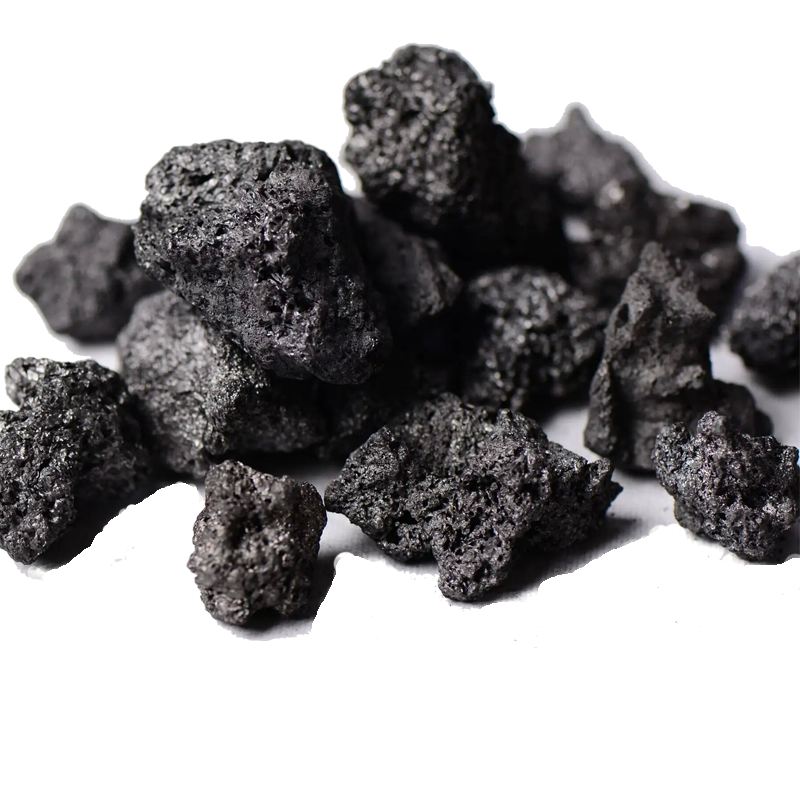Ultra High Power Graphite Electrodes: The Key to Increased Steel Production
1, the influence of carburizing agent particle size
The use of carburizing agent carburizing process includes dissolution diffusion process and oxidation loss process, carburizing agent of different particle size, dissolution diffusion rate and oxidation loss rate is different, and carburizing agent absorption rate depends on the carburizing agent dissolution for diffusion development rate and oxidation technology loss calculation speed of comprehensive management, in general, carburizing agent particles small, Dissolution reaction speed is fast, loss and speed is large; The carburizer has large particle size, slow dissolution rate and small loss increase rate.
2, the influence of liquid iron stirring on the absorption rate of carburizing agent
Agitation promotes dissolution and diffusion of carbon to avoid the burning of iron floating on the surface of the liquid. Before the carburizing agent can be completely dissolved, the stirring time is long and the absorption rate is high. Stirring can also shorten the time of carburizing insulation, shorten the production cycle, and avoid the combustion of alloying elements in hot metal. However, stirring time is too long, the carbon dissolved in the liquid stirred iron will exacerbate the loss of carbon has a great effect. Therefore, the appropriate mixing time management of liquid iron should be to ensure that the carburizer can be completely dissolved.
3, the influence of temperature on the absorption rate of carburizer
According to the analysis from the viewpoint of partial mechanics and thermodynamics, the oxidation of liquid iron is related to the equilibrium working temperature change of C-Si-O system, that is, the O in liquid iron will have adverse reactions with C and Si. The equilibrium temperature changes with the content of C and Si. Therefore, when the equilibrium working temperature is above, the absorption rate of carburant can be reduced. When the carburizing temperature is below the equilibrium ambient temperature, the saturated solubility of carbon is reduced due to the relatively low temperature, and the development rate of carbon dissolution and diffusion is declining, so the yield is also low; Carburizing temperature at the balance control temperature, carburizing agent absorption rate is high.
4, the influence of the addition of carburizing agent
In temperature and chemical composition, some liquids of carbon have the same constant condition of iron saturation concentration. The dissolution of carbon in cast iron for ([C] % = 1.30.0257 t – 0.31% [Si] 0.33 [P] % 0.45 [% S] 0.028 [Mn %] for hot metal temperature (t). Under a certain degree of saturation, the more carburizer is added, the longer the time required for dissolution and diffusion, the greater the corresponding loss, and the absorption rate will be reduced.
5, the influence of iron liquefaction chemical composition on the absorption rate of carburizer
When the liquid iron is high in initial carbon content, the absorption rate of the dissolved carburant is slow, the absorption rate of the carburant is less, and the relatively large combustion is low. When the initial carbon content of liquid iron is relatively low, the situation is reversed. In addition, the silicon and sulfur in the iron solution hindered the absorption of carbon and reduced the absorption rate of carbon enhancers. Manganese contributes to carbon absorption and increases the absorption rate of carbon enhancers. In terms of the influence degree, silicon is the largest, manganese is the second, carbon, sulfur is less. Therefore, in the actual production and development process, manganese should be added first, then carbon, and then silicon.
Recent Posts

undefined




 Quote Now
Quote Now